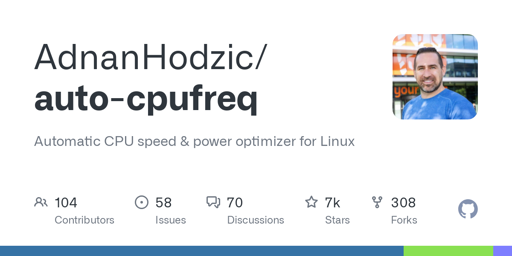This is an interesting spin on trying to optimize power efficiency. It’s similar to TLP, but instead of trying to optimize everything, it simply targets the CPU.
On a laptop running on battery, cpufreq can go into a low-power energy saving mode, but still boost the CPU for demanding tasks without the need to manually set the CPU to performance mode. This makes it a more ‘set it and forget it’ app.
This should also work on desktops, and could save you a few watts if you mostly use it to idle around in a browser all day, and only occasionally stress the CPU with a game or other task.
If you don’t care about automatically switching to a higher performance mode and instead want to prioritize power savings, such as on a laptop, TLP is still possibly better in that regard (and if you do go that route, be sure to use the TLP GUI
What’s the difference vs using a governer with scaling like ondemand?
One of the problems with Linux today on laptops is that the CPU will run in an unoptimized manner
Is this actually still true? I thought automatic scaling happens mostly on firmware level these days.
I think you’re right, and they may be exaggerating a bit. From what I can tell, this would be almost act like a 4th setting between power-save and on-demand mode, so you still get most of the benefits of power-save mode, but without the need to switch back to on-demand when you do something intense.
also @[email protected].
Gonna try it as soon as I get home, thanks!





